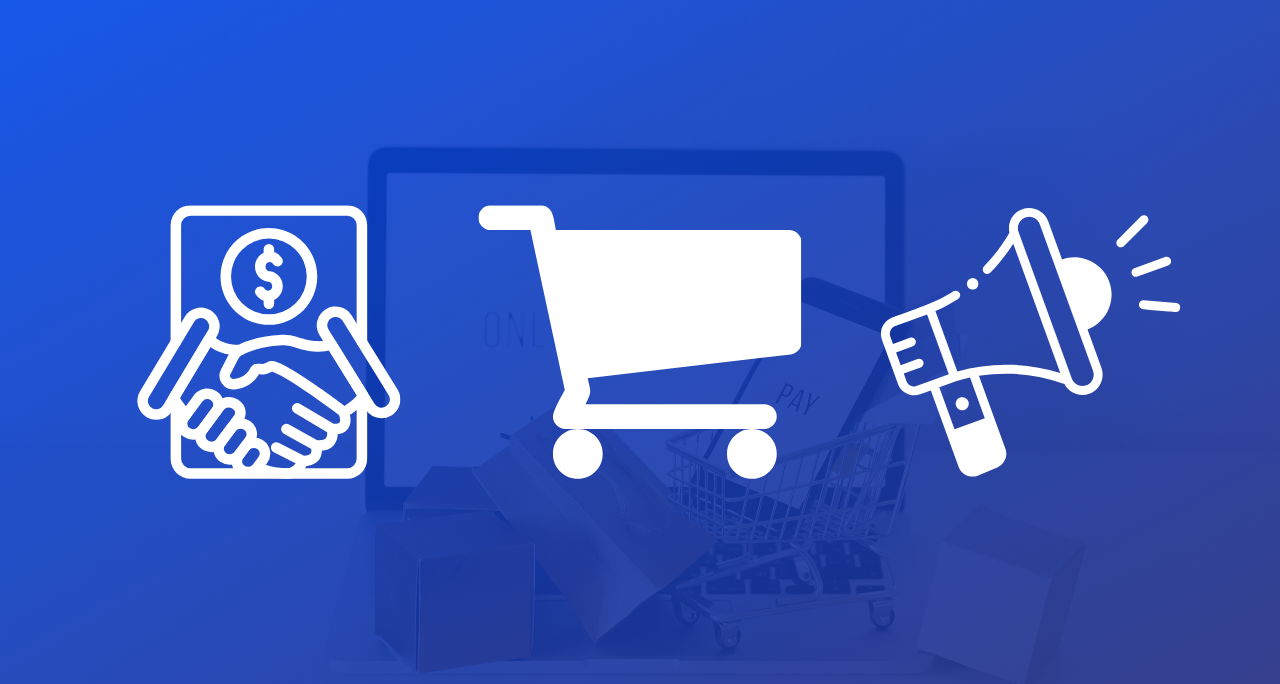The journey of today’s buyer is more complex than ever, and personalization has become a critical game-changer as businesses strive to connect with their target audience in more meaningful ways. B2B personalization entails customizing your marketing, promotions, and interactions to suit the unique requirements of individual B2B clients. This approach aims to provide quicker, more pertinent, and more intimately tailored experiences for business clients, relying on precise targeting and deep comprehension of those clients.
And personalization is worth doing, according to the statistics: one study shows _that 85% of buyers say they’re less likely to engage with brands that don’t personalize from the very first touchpoint.
On a more granular level, Adobe has reported that 68% of B2B customers expect personalization when getting help with products/services; 66% expect personalization when buying products/services; 59% expect personalization in the research stage; and 57% expect personalization in the discovery stage.

5 key features of B2B personalization and how it differs from B2C
B2B (business-to-business) personalization and B2C (business-to-consumer) personalization have some key differences. In essence, while both B2B and B2C personalization aim to tailor experiences to specific customers, the strategies, content, and channels used differ due to the distinct nature of the target audiences and their purchasing behaviors.
As Brian Solis, principal analyst at Altimeter, explains: “Business buyers don’t go to work and forget what they do as humans. There’s a new normal that blurs the line between B2B and B2C. They just want things personalized.”
Following are some of the key differences between B2B and B2C personalization:
- Audience and Relationship: B2B personalization focuses on businesses as customers, where the relationships are typically more formal and professional than in B2C.
- Complexity of Decision-Making: B2B purchases often involve multiple decision-makers within a company, each with different needs and priorities. B2B personalization needs to address these complex decision-making units.
- Purchase Cycle: B2B purchases tend to have longer sales cycles with higher value transactions than in B2C. This means B2B personalization often involves nurturing leads over time with detailed information and tailored solutions.
- Content and Messaging: B2B personalization often revolves around demonstrating expertise, showcasing ROI, and providing detailed product/service information.
- Channels: B2B personalization often relies on a mix of digital channels (including email, LinkedIn, and industry-specific platforms) and offline interactions (like conferences and meetings).
5 key benefits of B2B personalization
It’s undeniable: in the current competitive B2B environment, distinguishing oneself demands a thoughtful and tailored strategy. The era of generic communication and broad marketing methods is fading. B2B customers no longer wish to be seen as just another face in the crowd of potential buyers; instead, they seek recognition and attentive engagement.
There are also clear benefits that make the extra efforts personalization demands worth it. Here are five reasons B2B companies should amplify their customization:
- Establishes Trust – B2B eCommerce personalization demonstrates to customers that their preferences and requirements are acknowledged and valued. When an eCommerce platform is customized to match the buyer’s distinct needs, it nurtures trust and assurance in the business association.
- Enhances Customer Retention – Personalization plays a crucial role in crafting positive and memorable shopping experiences that pave the way for loyal client relationships. Consistent and finely tuned personalization efforts reinforce the value proposition and contribute to heightened customer satisfaction, thereby reducing the likelihood of clients seeking alternatives elsewhere.
- Boosts Conversions – B2B eCommerce personalization serves as a potent tool for driving up conversion rates. When the purchasing journey caters to the customer’s specific needs and preferences, it simplifies decision-making and enhances the overall shopping experience. Consequently, this results in increased conversion rates as customers are more likely to discover exactly what they’re looking for and feel confident in their purchases.
- Nurtures Relationships – Personalization enhances the eCommerce journey beyond a simple transaction to a meaningful relationship. Through the consistent delivery of tailored experiences, B2B eCommerce platforms engage with buyers on a personal level, mirroring the in-person or email interactions in the online sphere.
- Elevates Average Order Value – B2B eCommerce personalization prompts customers to explore additional offerings by suggesting complementary products and presenting personalized pricing incentives, which can amplify the value of individual transactions.

Unique challenges in B2B personalization
Although every brand aims to provide tailored experiences to a large customer base, they frequently encounter obstacles. These challenges can be categorized into several main areas:
- The quality and availability of data: B2B transactions often involve complex buyer groups and decision-making units. Gathering accurate and comprehensive data about these entities, their preferences, and purchasing behaviors can be challenging. Companies may struggle with incomplete or outdated data, hindering their ability to personalize effectively.
- Data sources may be fragmented: B2B customer data may be spread across various systems and platforms, such as CRM (Customer Relationship Management) software, ERP (Enterprise Resource Planning) systems, and marketing automation tools. Integrating these disparate data sources to create a unified view of the customer can be difficult.
- Sales cycles tend to be longer: B2B sales cycles are typically longer in duration and involve multiple touchpoints. Personalizing content and interactions throughout these extended cycles requires sustained effort and a deep understanding of the buyer’s journey.
- Buyer personas can be complex: B2B buyers often represent businesses, not just individual consumers. Understanding the unique needs, pain points, and motivations of various stakeholders within a single organization can be complex. B2B personalization needs to account for these diverse personas.
- Privacy and compliance: B2B transactions often involve sensitive business information. Personalizing content and offers while respecting data privacy laws and regulations (like GDPR or CCPA) can be challenging. Companies need to navigate these legal frameworks carefully.
- The importance of content creation and management: Delivering personalized content at scale can strain resources. Developing and managing a variety of personalized content pieces tailored to different buyer personas, industries, or stages of the sales funnel requires robust content strategies and tools.
- Personalization in real time: Providing timely and relevant content in real-time during interactions can be difficult. B2B organizations may struggle with delivering personalized experiences across multiple channels instantly, especially during live engagements like sales calls or webinars.
- ROI Measurement: Quantifying the impact of personalization efforts on B2B sales and revenue can be challenging. Connecting personalized interactions to actual conversions and sales requires sophisticated analytics and tracking mechanisms.
Overcoming these challenges often involves a combination of technology solutions (like CRM systems and AI-driven personalization tools), data management strategies, clear organizational alignment, and a customer-centric mindset throughout the B2B organization.
Real-world examples of effective B2B personalization
Effective customization gives customers the sense that you’re attentive to their needs, crafting solutions tailored to their specific situations. This approach nurtures loyalty, goodwill, and repeat patronage in a quantifiable manner.
To illustrate what works, here are three examples of companies who’ve nailed it:
Zendesk, a well-known provider of customer service software, integrates Evergage into its platform to predict what users will need. Evergage is a company that uses machine learning to study past data, helping businesses forecast user actions with precision. Through examining how users engage with the support system, Zendesk employs proactive personalization. This customized method offers users precise resources and advice, perfectly matching their needs and preferences. As a result, Zendesk greatly boosts customer satisfaction and operational efficiency by promptly meeting users’ exact needs in the moment.
Sapiens, a prominent global provider of software solutions for the insurance and financial sectors, implemented a personalized marketing solution developed for them by TrenDemon. This system tracked customer journeys, pinpointed the most successful content, and devised a content recommendation widget. This widget offers visitors personalized reading suggestions and custom CTAs, effectively reducing their bounce rate.
Salesforce’s Marketing Cloud utilizes contextual personalization to elevate user experiences. It adjusts content dynamically, considering factors such as location, device, and previous interactions. Through this real-time customization, Salesforce effectively enhances engagement across diverse B2B marketing platforms, leading to increased user satisfaction and better conversion rates. This practical example highlights the effectiveness of contextual personalization tools in driving successful B2B marketing approaches, delivering content that resonates with users in their specific contexts.

Measuring B2B personalization success
Assessing the effectiveness of B2B personalization involves examining various metrics to understand its impact on business goals and customer satisfaction. Here are several methods to gauge B2B personalization success:
- Conversion Rates: Compare the conversion rates of personalized campaigns to generic ones. Do personalized emails, offers, or content result in higher conversion rates? Analyze metrics such as lead-to-customer conversions or conversions from personalized landing pages.
- Customer Engagement: Measure customer engagement with personalized content. Are they spending more time on personalized web pages? Engaging with personalized emails (click-through rates, open rates)? Engagement metrics offer insights into how well the personalization strategy resonates with the B2B audience.
- Lead Quality and Nurturing: Evaluate the quality of leads generated through personalized campaigns. Are these leads more likely to convert into customers? Look at metrics like lead scoring, lead velocity, and lead-to-opportunity conversion rates.
- Customer Retention and Lifetime Value: Personalization can improve customer loyalty and increase their lifetime value. Track metrics such as customer retention rates, repeat purchase rates, and average order value from personalized customers compared to non-personalized ones.
- Personalization Impact on Sales Cycle: Determine if personalization speeds up the sales cycle. Are personalized interactions reducing the time for leads to become customers? Assess metrics like sales cycle length, velocity, and progression through the sales pipeline.
- Content Performance: Evaluate the performance of personalized content. Monitor metrics such as page views, time spent on personalized pages, and interactions with personalized content assets (like whitepapers or case studies). Identify which types of personalized content drive the most engagement and conversions.
- Feedback and Surveys: Gather direct feedback from customers on their experiences with personalized interactions. Surveys and feedback forms provide qualitative insights into how customers perceive and value personalization efforts.
- A/B Testing: Conduct A/B tests to compare personalized versus non-personalized campaign performance. This helps quantify the impact of personalization on key metrics like click-through rates, conversion rates, and engagement.
- Customer Satisfaction Scores: Monitor customer satisfaction scores and Net Promoter Scores (NPS) among those exposed to personalized interactions. Higher scores indicate that personalization is positively resonating with your B2B customers.
- Revenue and ROI: Ultimately, tie B2B personalization success to revenue growth and ROI. Calculate the return on investment from personalized campaigns against their costs. Look at metrics like revenue generated from personalized campaigns, cost per acquisition, and overall revenue growth attributed to personalization efforts.
By analyzing these metrics, B2B organizations can gain valuable insights into the effectiveness of their personalization strategies and make informed decisions to optimize and enhance their approach.

Future Trends in B2B personalization
The world of B2B personalization is constantly changing, driven by advancements in technology and evolving customer expectations. Here are some upcoming trends in B2B personalization:
- AI and Machine Learning are becoming increasingly important in B2B personalization. These technologies can sift through large amounts of data to predict customer behavior, preferences, and needs. AI-driven personalization will enable businesses to deliver highly specific and relevant content and recommendations.
- B2B buyers now desire hyper-personalized experiences like those found in B2C markets. Hyper-personalization goes beyond basic segmentation, offering tailored content, product suggestions, and pricing based on specific customer profiles or even individual buyers. This level of customization boosts engagement and leads to more conversions.
- There’s a growing demand for real-time experiences. B2B companies will utilize AI and data analytics to provide personalized content and suggestions instantly, during live interactions like website visits, emails, and customer service interactions. This immediate personalization enhances user satisfaction and engagement.
- B2B firms are increasingly turning to predictive analytics to forecast customer needs and behaviors. By analyzing historical data and patterns, predictive analytics can recommend the best actions or products for a customer, improving opportunities for cross-selling and upselling.
- B2B buyers engage with businesses across various channels, such as websites, social media, email, and offline touchpoints. Omnichannel personalization ensures a seamless, consistent experience across all these channels. This involves integrating data from multiple sources to deliver personalized content and messages wherever the customer interacts.
- As voice technology progresses, B2B organizations will integrate voice-activated assistants and conversational AI into their personalization strategies. These interfaces enable users to interact naturally with systems, offering personalized recommendations, answering queries, and facilitating purchases.
- Interactive content such as quizzes, assessments, and configurators will become more common in B2B marketing. These tools not only gather valuable data about customer preferences and behaviors but also provide engaging and personalized experiences.
- ABM (Account-Based Marketing) focuses on producing personalized campaigns for the most valuable accounts. B2B companies will continue investing in ABM personalization, tailoring content and messaging to the unique needs and pain points of individual accounts.
- With growing data regulations and customer privacy concerns, B2B organizations will prioritize ethical data practices. Transparency in data collection and usage will be vital for maintaining customer trust. Businesses will invest in secure data storage and processing to safeguard customer information.
Achieving personalization on a large scale remains a challenge for B2B companies. Advanced automation and AI tools will assist in scaling personalization efforts, efficiently managing and analyzing extensive datasets to create customized experiences for diverse audiences.

Conclusion
In today’s marketplace, the path of the modern buyer is intricate and multifaceted, requiring businesses to leverage personalization as a pivotal strategy. This approach is essential for establishing meaningful connections with the target audience.
The future of B2B personalization is moving towards more advanced, AI-driven, and real-time experiences. Businesses that embrace these trends will set themselves apart, drive customer engagement, and ultimately boost their bottom line.





